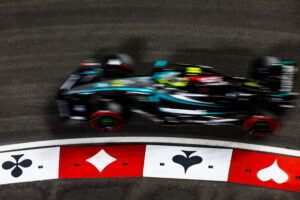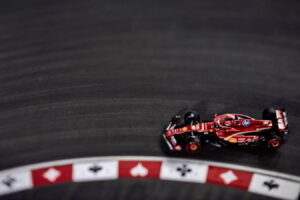As you travel past the farms and the rolling hills on County Route 16 in the Finger Lakes Region of upstate New York, suddenly appearing at the top of a hill is the massive race compound known as Watkins Glen International. NASCAR makes its annual trek to Upstate New York this weekend as the stars of the Monster Energy Cup Series compete in the Go Bowling at the Glen on Sunday afternoon.
And now for Something Completely Different – Watkins Glen
NASCAR has suffered some sagging attendance numbers of late but don’t include Watkins Glen International in that group. The fans eagerly flock to this track, in fact, the race has been a sellout for several years and there’s every reason to believe that 2018 will be the same.
What makes this track so different? Being only the second road course, the other being the slower road course at Sonoma, the best word to describe the Glen is unique. There is simply no other track on NASCAR’s calendar like it and its produced some of the most exciting racing we’ve seen in the Cup series in recent seasons. In a sport that is in need of great racing, Watkins Glen seldom fails to deliver.
NASCAR races primarily on four turn ovals with apologies to the three turn Pocono Raceway. Road course like Watkins Glen offers multiple turns some right and some left. Drivers and Crew Chiefs have to set up their cars to handle both. Often pit strategy and fuel mileage play a bigger role in determining the race winner than at most other tracks. Getting a car to handle both left and right turns, getting great fuel mileage and when to pit makes this race a thinking man’s race.
Brakes and Pit Stops
Brakes often have a lot to say about where a car will finish. The hills, sharp turns and high speeds of this course can be difficult on the brake systems. We’ve seen many a driver with strong cars, have poor finishes due to brake issues. On most oval tracks the potential for passing relies on how quickly a driver can get back on the throttle.
A road course and in particular at Watkins Glen the greatest passing opportunities come with someone out braking their competitor. A car that can carry more speed into the corner and brake faster without spinning their tires or causing a dreaded “wheel hop” has a tremendous advantage. Chances are the car who takes home the winners trophy will have no issues with their brakes.
Pit stops are pretty standard at most tracks. Teams start on the left side of the car and finish on the driver’s side. At road courses that is the exact opposite. Since cars enter pit road in the opposite directions at Watkins Glen, the crew will actually change the driver’s side tires first before moving to the other side. This change can be a challenge for the pit crews as many changes to the process have to be made. I’m betting that there will be a fuel can or two heading out of the pit box on Sunday.
You would think that given all the differences in racing at Watkins Glen the drivers would be unhappy. For many, its the exact opposite. Several seasons ago the race here would draw many drivers who were road course ringers. That is drivers from other series like Boris Said who would often find his way into this race. Not anymore. The regular Cup drivers soon figured out how to get around this place and the days of the ringers is now just a memory.
I talked to a driver in the Xfinity Series a few years ago about racing at Watkins Glen. A huge smile came across his face as he told me he and most other drivers love racing here. He went on to explain that none of them knew what they were doing and it was just a blast trying to figure it out. Recently it’s been a blast for the rest of us as well.
Thanks for reading. Listen to WTBQ Radio on Monday and Friday mornings at 8:45 as I join the gang on The Frank Truatt Morning Show discussing the world of NASCAR. Tune in to 1110AM, 93.5FM or streamed worldwide at wtbq.com. You can also follow me on twitter @Jimlaplante.
MAIN PHOTO:
Embed from Getty Images






